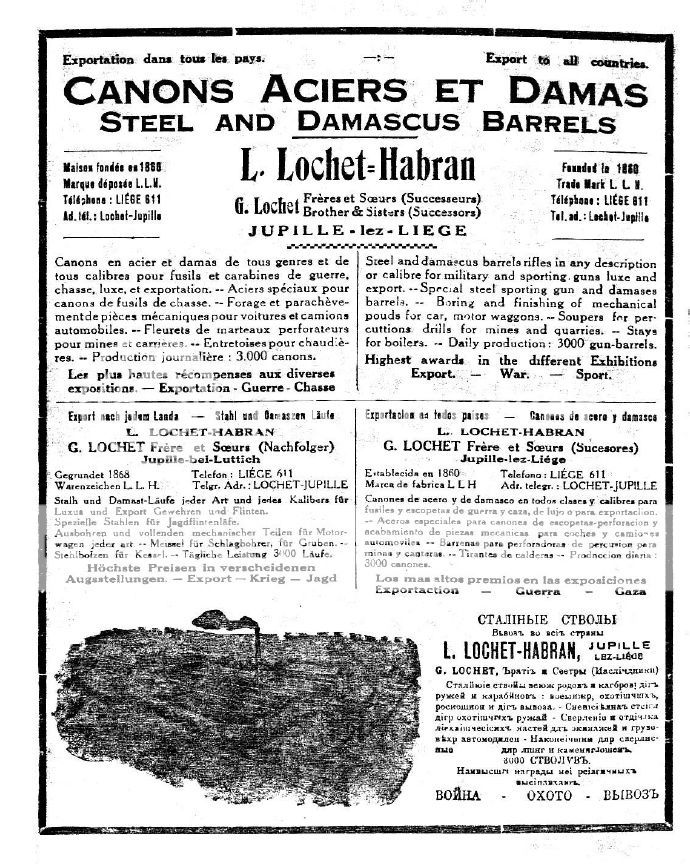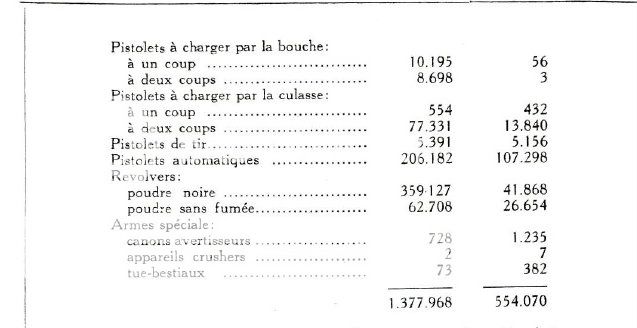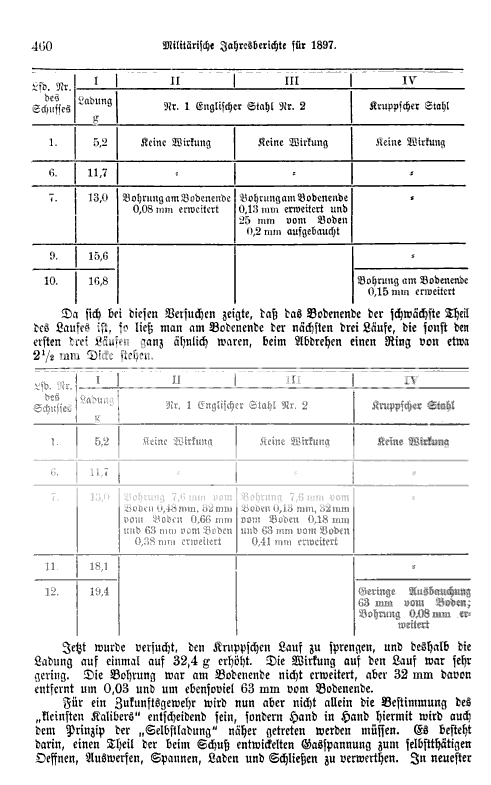|
S |
M |
T |
W |
T |
F |
S |
|
|
|
|
1
|
2
|
3
|
4
|
|
5
|
6
|
7
|
8
|
9
|
10
|
11
|
|
12
|
13
|
14
|
15
|
16
|
17
|
18
|
|
19
|
20
|
21
|
22
|
23
|
24
|
25
|
|
26
|
27
|
28
|
29
|
30
|
31
|
|
|
|
1 members (Karl Graebner),
681
guests, and
4
robots. |
|
Key:
Admin,
Global Mod,
Mod
|
|
|
Forums10
Topics39,499
Posts562,117
Members14,587
| |
Most Online9,918
Jul 28th, 2025
|
|
|
|
Joined: Aug 2007
Posts: 12,082 Likes: 379
Sidelock
|

Sidelock
Joined: Aug 2007
Posts: 12,082 Likes: 379 |
Jim:
First, I would say that accurate info about the Belgium craftsmen is difficult to confirm. But let's take some of their numbers say 5 or 10 years prior to WWI. There were some 70k folks working in an around Liege in the gunmaking industry. The area of Jupille seems to contain the bulk of the mechanics who for the most part rolled out the bulk of the steel tube production for export, although it is possible that mechanics in Nessonvaux like E. Heuse-Lemoine contributed also. I've seen a couple references that point to the area of Jupille having an exclusive right to use Krupp steel in the production of gun tubes. Considering the area, and also that a specific maker was not named, I think it points to Laurent Lochet-Habran. This area was noted as being able to churn out say over 1500 tubes per day and let's say there were 6 working days per week, so we are looking at 1/2 million tubes per day or 1/4 million tubesets per year. Where were they all going? I would say that all pre-WWI American made sporting weapons that wear run of the mill Krupp tubes(Fluß Stahl Krupp Essen, etc.) can find their origins in Jupille. Realizing the German foot-print there as well as Sauer's trademark protection, for now I see few other options. Post WWI, I'm not sure of the tubeset production numbers, but with 70k folks in the gunmaking industry prior to WWI, I don't think they went away. There's a fallacy around sporting weapons that a gunmaker or gunmaking area took the raw materials from the earth and forged every piece of their wares in-house by the sweat of his brow, composing components for the sporting weapon. Enter economics side-stage left - it was all about the Benjamins. Catalogues might provide some insight but although not a statistical triumph, I'd say locating a handful of Italian offerings with Krupp steel tubes that wear LLH would be definitive. I don't think the Germans want to acknowledge their sourcing of the Belgians, but I don't see any other way that the retailers were able to peddled price point weaspons without sourcing the mechanics of Liege, who embraced mechanization early on in their endeavors. I'm not into finger pointing but the preponderance of evidence is heavily tilting the scales that way and I don't think it any different for the Italian makers. If the Brits are noted as indirectly sourcing Krupp tubes, I'd say all were regarding price point sporting weapons. I invite any & all info to the contrary.
Peter:
As a wild guess, I would say that Acciaio Speciale Krupp has its origins at Acciai Speciali Terni, which was founded in 1884? It may also be a specific recipe or solely note that the tube steel was sourced in country as a Krupp recipe and Krupp sanctioned.
Kind Regards,
Raimey
rse
|
|
|
|
|
Joined: Aug 2007
Posts: 12,082 Likes: 379
Sidelock
|

Sidelock
Joined: Aug 2007
Posts: 12,082 Likes: 379 |
I believe this to be an early 1900s, pre-WWI listing for a Group 120 - Hunting equipment: "(f.) LOCHET-HABRAN, Jupille (Liege). ''Fabrication of steel gun barrels of all kinds and all calibers for portable fire-arms for hunting, war, fancy and exportation. Steel barrels for ordinary « Flobert » carabines, for shooting and precision shooting, adapted hooked-barrels and hooked-barrels, called 1/2 blocks, barrels of« Krupp » steel. Special steel for hunting gun barrels.False breeches and separate fittings for all sorts of guns. Distinctions : Antwerp, 1885; Barcelone, 1888; Brussels, 1888, Golden medals; Paris, 1889, Golden medal and Diploma of honour; Scheveningue, 1892, Diploma of honour; Chicago, 4893, out of competition; Antwerp, 4894, Golden medal; Brussels, 1897, Diploma of honour; Paris, 1900, Golden Medal" Difficult to keep all info at the finger tips, but below is an advert that notes a production of 3k tubes per day(1928?)   Liege Proofhouse numbers compared between 1913 & 1926 I believe. Kind Regards, Raimey rse
|
|
|
|
|
Joined: Aug 2011
Posts: 52
Sidelock
|
OP

Sidelock
Joined: Aug 2011
Posts: 52 |
Raimey & I have gone back and forth a little off-line on the subject of just WHO turned the tubes that were made of Krupp steel & wound up on Beretta guns: (10) Krupp, (2) Beretta, or (3) a Belgian fabricator.
Anyone have insights to share?
Of course, the barrels in question carry the Krupp name/logo, but that could in fact reference just Krupp's contribution of steel. A quick scan around the web turned up numerous guns stamped LLH by the Belgian firm Laurent Lochet-Habran...but I've not seen that mark on the few pre-war Berettas I've had the opportunity to inspect. Stamping would of course be determinative.
What say you guys?
|
|
|
|
|
Joined: Nov 2005
Posts: 4,598
Sidelock
|

Sidelock
Joined: Nov 2005
Posts: 4,598 |
...Of course, the barrels in question carry the Krupp name/logo, but that could in fact reference just Krupp's contribution of steel. A quick scan around the web turned up numerous guns stamped LLH by the Belgian firm Laurent Lochet-Habran...but I've not seen that mark on the few pre-war Berettas I've had the opportunity to inspect. Stamping would of course be determinative... Without stamped barrels everything is speculation. We know Krupp was licensing their formulations. Who poured the steel, rolled it, etc. needs verification. Pete
|
|
|
|
|
Joined: Aug 2007
Posts: 12,082 Likes: 379
Sidelock
|

Sidelock
Joined: Aug 2007
Posts: 12,082 Likes: 379 |
I had forgotten that S,D&G were Krupp Agents and that may go a long way to explain the Sauer-Liege-U.S. of A. sporting weapons triangle, but I think the following sums it up nicely.
"Krupp Steel Barrels - April 2nd, 1902
We are informed by the makers of Krupp steel barrels(for whom we are agents) that they have heard that some manufacturers have been selling guns with steel barrels and representing them as being "Krupp steel." All genuine Krupp steel barrels are marked as follows:
"A" for rifle barrels, marked on the bottom of the barrel guß-stahl (cast steel) Krupp Essen
"B" for shotgun barrels, marked on the bottom of the barrel fluß-stahl (fluid steel) Krupp Essen.
"C" for special steel for either shotgun or rifle barrels marked "Spezial Gewehr Lauf Stahl Fried. Krupp Essen." encircling three interlacing rings on the top of the barrel.
As it is against the law to call steel gun barrels Krupp steel unless they are Krupp steel and stamped as above, we are instructed by the manufacturers to stop the unauthorized use of their name. As it is to the interest of every sportsman who buys a gun with Krupp steel barrels to get what he wants we trust you will publish this in your paper to warn the public.
SCHOVERLING DALY & GALES"
The Italians did not reinvent the wheel on making Krupp tubes, they sourced them from a Krupp outlet and that outlet was Liege/Jupille, the sole authorized Fluß Stahl Krupp Essen. The only source of Krupp Spezial Weapons Grade Steel was Sauer and there are no exceptions. As far as I can tell, Krupp did not make 1 sporting weapon tube and made 0(zero) Spezial Weapons Grade Steel tubes. S,D&G had minimized their footprint post WWI so I wonder who took their place. If Italian sporting weapons are wearing genuine Krupp Steel Tubes, that would had to have originated at a Krupp outlet. We need a maker's ledger.
As a side-note, on March 6th, 1897 "The Field, The Country Gentleman's Newspaper" either performed a test or had a test performed on 3 scattergun tubes, 2 of English variety and 1 delivered by Krupp(says Spezial Stahl but no 3 Ringe), although I have serious reservations they actual made it but subbed the effort to Sauer. Tubes were 12 bore being 18.6 mm in diameter & having a wall thickness of 2.54mm. This is one of the very few instances where the concern Krupp and a sporting weapons tube are associated. Krupp began development of the Spezial Gewehr Lauf Stahl in 1893 and filed a trademark in 1896, I believe.
Kind Regards,
Raimey
rse
|
|
|
|
|
Joined: Aug 2007
Posts: 12,082 Likes: 379
Sidelock
|

Sidelock
Joined: Aug 2007
Posts: 12,082 Likes: 379 |
Poldi's Antikorro & Röchling's SonderStahl, etc. had authorized outlets in specific gunmaking centres similar to Krupp's Spezial Gewehr Lauf Stahl thru Sauer. I've only seen the Spezial Gewehr Lauf Stahl stamp in 2 languages: English & German.
Kind Regards,
Raimey
rse
|
|
|
|
|
Joined: Aug 2007
Posts: 12,082 Likes: 379
Sidelock
|

Sidelock
Joined: Aug 2007
Posts: 12,082 Likes: 379 |
Post WWI, let's say that Jupille was turning out 1k to 1.2k braces of scattergun tubes per day so that 350k tubesets per year. Let's also assume that it commenced in 1920 and continued for 10 years to 1930. That's 3.5 million scattergun tubesets and not all were Krupp mind you but where were they going?
Kind Regards,
Raimey
rse
|
|
|
|
|
Joined: Aug 2007
Posts: 12,082 Likes: 379
Sidelock
|

Sidelock
Joined: Aug 2007
Posts: 12,082 Likes: 379 |
The 1897 English vs. Krupp tube steel test results:  A translation may prove insightful. Kind Regards, Raimey rse
|
|
|
|
|
Joined: Aug 2007
Posts: 12,082 Likes: 379
Sidelock
|

Sidelock
Joined: Aug 2007
Posts: 12,082 Likes: 379 |
Krupp & Sauer were very, very chummy and from what I can glean the actual phrase of the period for the protection for the Sauerwerks's sole right to manufacture tubes of Krupp's 3 Ringe Stahl is "Kruppschen Gewehrlauf-Sonderstähle" and I'm not sure when the advertising on the tube reflected Krupp Spezial Gewehrlauf Stahl Drei Ringe.
Kind Regards,
Raimey
rse
|
|
|
|
|
Joined: Aug 2007
Posts: 12,082 Likes: 379
Sidelock
|

Sidelock
Joined: Aug 2007
Posts: 12,082 Likes: 379 |
I finally found the thread I was looking for with a tube stamped Acier Special Pour Poudre Pyroxylée: http://www.doublegunshop.com/forums/ubbt...&PHPSESSID=Kind Regards, Raimey rse
|
|
|
|
|